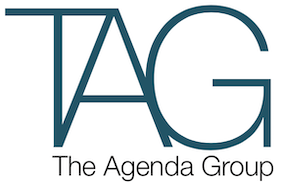Much of the focus in the media realm of late has centred on the revenue side of public finances – both in expected revenue shortfalls, and the options available for government to shore up its tax base.
The Federal Government is the biggest circus in town, so that’s where most interest lies, but there are other trends in government – on the expenditure side, and largely driven at state level, that are worth noting.
There’s an unremarked but important evolution in the extent to which state governments are becoming more innovative and flexible in their approach to procuring both capital items and service/program delivery by and from the private and non-government sector.
In recent times the New South Wales and Victoria Governments have introduced or announced a range of reforms and policy initiatives across government procurement, covering major infrastructure projects through to small community service programs
New South Wales is now seeing the first fruits of its ‘unsolicited proposals’ framework, introduced by the O’Farrell Government, that has given rise to proposals including Transurban’s F3 to M2 tunnel link, Crowns’ hotel and VIP gambling facility plans at Barangaroo, and a bid from Echo Entertainment to further develop The Star casino.
Following this path, the Victorian Government announced in its December 2012 economic statement, Securing Victoria’s Economy, that “the Government will implement a clear framework for consideration of unsolicited private sector proposals for infrastructure investment.”
Implementing a framework for consideration of unsolicited proposals allows government, in a transparent and accountable manner, to assess project and policy ideas developed outside of government.
It allows government to harness the creativity and expertise of the private and non-government sectors in providing solutions to public needs. In turn, it provides the process direction and certainty necessary to encourage external parties to be pro-active in developing and taking their ideas to government for consideration.
‘Public Private Partnerships’ (PPPs), as an infrastructure financing and delivery model have been used for some time now across Australian jurisdictions with somewhat mixed success – particularly for the private sector.
Shortcomings range from the significant expense of participating in a bid process through to difficulties in demand forecasting (most notably for toll road projects) and attendant risk assessment, and in a post-GFC environment, constraints on privately raised financing.
Governments are looking to address these areas, and are also expanding the fields in which they are willing to apply PPPs.
Victorian Treasurer Michael O’Brien has announced a set of reforms for PPPs to streamline the bid process, assess value for money of proposals, and to incorporate the potential for new financing models, including forms of joint private and public financing.
In NSW, the O’Farrell Government has determined that the new 423-bed Northern Beaches hospital in Frenchs Forest will be delivered as a new variation on traditional PPP models in the public health space, offering both public and private beds, with the Government taking over the facility after 20 years.
It’s not just in the provision of buildings and roads and other capital items that there’s a quiet evolution in government thinking.
At the other end of the public services spectrum, governments are looking at fundamental changes in how and by whom community services are designed and delivered.
The NSW Government is the first in Australia to trial the use of ‘Social Benefit Bonds’ (SBBs), an adaptation of models used overseas including under the UK Government’s ‘Big Society’ policies.
As my colleague at The Agenda Group, Catherine Macneil explained in her recent article on SBB’s:
SBBs are financial instruments that pay a return based on the achievement of agreed social outcomes. Investors fund the delivery of services targeted at improving a particular social outcome and the achievement of this outcome should reduce the need for, and therefore government spending on, acute services.
Part of the resultant savings are then used to repay investors’ principal and make additional reward payments, the level of which is dependent on the degree of outcome improvement achieved.
SBBs encourage contracting agencies to foster greater innovation and flexibility in program design, focussed as they are on driving outcomes, rather than the traditional output measures of conventional service delivery.
Conventional forms of community service delivery will nevertheless remain the mainstay of government programs, however successful SBBs may prove.
The Victorian Government’s Service Sector Reform project is currently examining issues and options for reform of the contracting and service delivery arrangements between government and its providing agencies. Its objectives are ensuring greater efficiencies in public spending, growing the performance capacity and sustainability of the community sector, and getting better integration of approach within government.
In 2011-12 the Victorian Department of Human Services alone provided $1.3 billion in funds to around 1,000 community sector organisations to deliver services in the state. More than half of these organisations are small, discrete agencies receiving less than $100,000 in funding.
For many of these smaller organisations, the need for complex contract management and reporting eat into their resources and distract them from what they do best – providing services.
The flip side of the same coin is that substantial government resources tied up in administering such a large number of individual service contracts.
Some rationalisation will likely be recommended for all contracting parties, which will drive structural and behavioural change on both sides.
Fewer contracts will be issued. Cooperation in the design and ownership of programs will be needed across government departments and agencies, compared to the current ‘siloed’ practices.
Community sector agencies responding to government contracts will need to work together to establish new contracting partnership models that capture individual agencies’ areas of practise expertise, whilst reducing back-office costs.
None of these changes to how governments spend their money are likely to grab the headlines, dominated by the latest speculation on tax cuts or increases, but they do all feed into the same budget equation.
